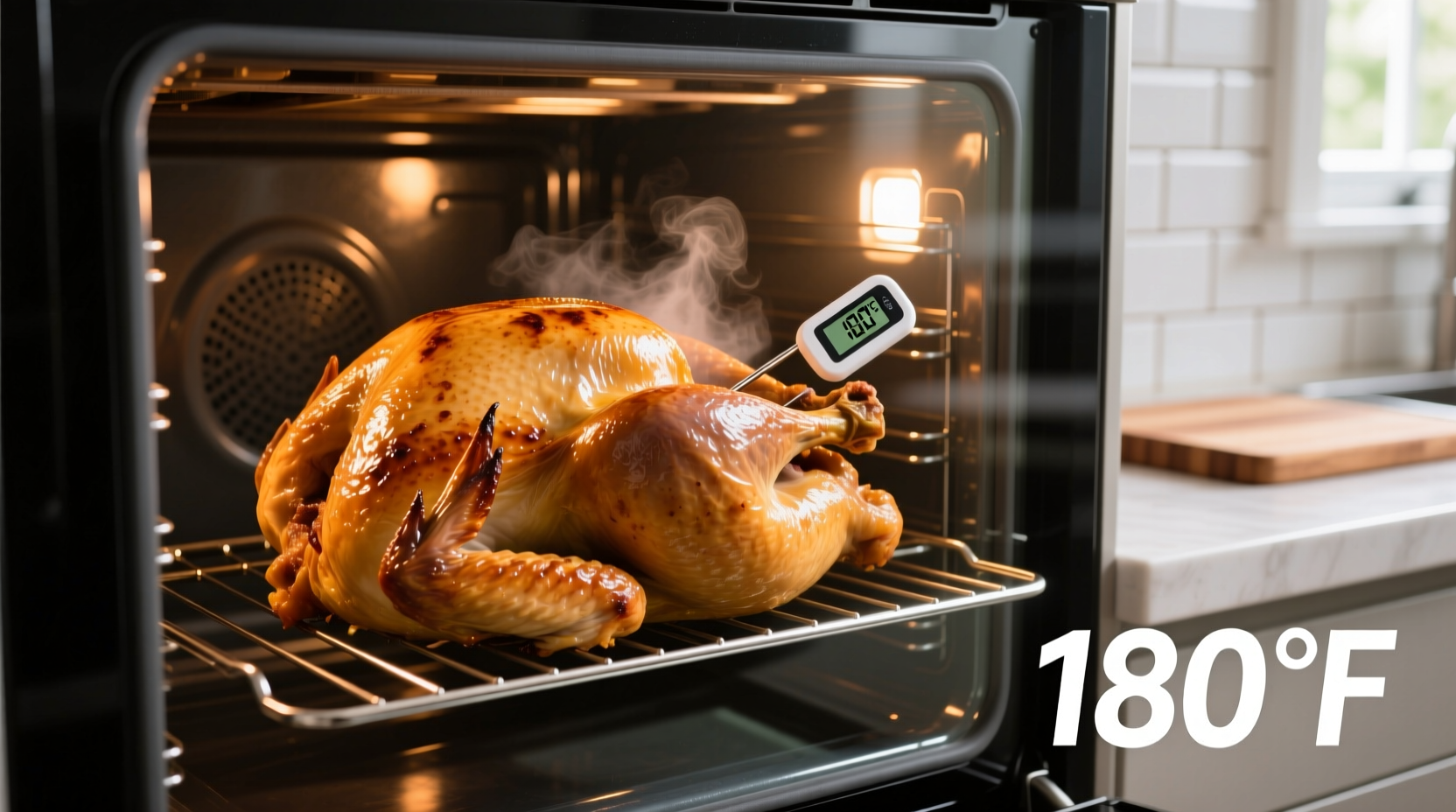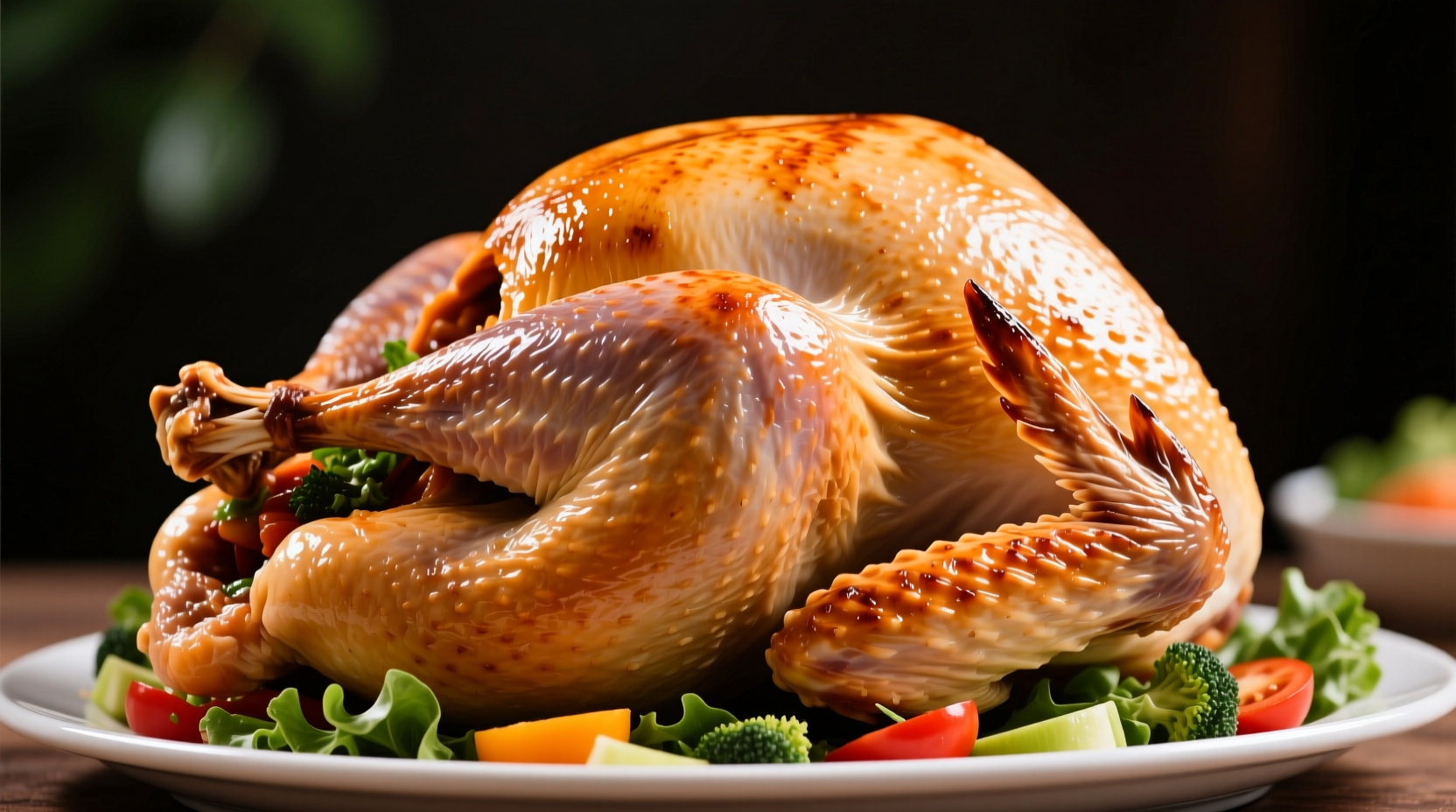Planning your holiday meal? Getting the cooking time right for your 10-pound turkey ensures juicy meat and eliminates food safety risks. This comprehensive guide delivers precise timing information backed by food safety experts, plus practical techniques professional chefs use to achieve perfect results every time.
The Science-Backed Cooking Timeline for Your 10-Pound Turkey
While many traditional recipes rely on weight-based time estimates alone, modern food science emphasizes internal temperature as the definitive indicator of doneness. Here's what actually matters for your 10-pound bird:
| Cooking Method | Estimated Time | Critical Temperature Checkpoints |
|---|---|---|
| Unstuffed, 325°F oven | 2½ to 3 hours | Breast: 160°F, Thigh: 165°F |
| Stuffed, 325°F oven | 3 to 3½ hours | Both stuffing and thigh: 165°F |
| Convection oven | Reduce time by 25% | Check 30 minutes earlier than standard |
Your Step-by-Step Cooking Roadmap
Preparation Phase (60 Minutes Before Roasting)
Remove your turkey from the refrigerator 60 minutes before cooking. This critical step reduces cooking time variance by bringing the bird closer to room temperature. Pat thoroughly dry with paper towels – moisture on the skin prevents proper browning. Season generously, then rub with oil or softened butter to create a protective barrier that locks in moisture during roasting.
Roasting Process: Monitoring Progress
Place your turkey breast-side up on a rack in a shallow roasting pan. Insert an oven-safe thermometer into the thickest part of the breast, avoiding bone. Set your oven to 325°F – this moderate temperature prevents exterior burning while ensuring thorough cooking.
After the first 90 minutes, begin checking the internal temperature. The breast should reach 160°F and the thigh 165°F. Remember that temperature will continue rising 5-10 degrees during resting. The USDA Food Safety and Inspection Service confirms that 165°F is the minimum safe internal temperature for poultry to eliminate harmful bacteria.

Key Variables That Change Your Cooking Time
Several factors significantly impact your turkey's cooking duration. Understanding these context boundaries ensures accurate timing:
- Stuffing status: A stuffed turkey adds 20-30 minutes to cooking time as the cavity contents must also reach 165°F
- Oven accuracy: Use an independent oven thermometer – many built-in thermostats vary by 25°F or more
- Rack position: Middle rack provides most even heat distribution; lower positions may cause bottom burning
- Starting temperature: A thoroughly chilled turkey (straight from fridge) adds 20-30 minutes versus room temperature
Food Safety Timeline: Avoiding the Danger Zone
Understanding the food safety timeline is non-negotiable for holiday cooking. The FDA Food Code specifies that cooked poultry must pass through the temperature danger zone (40°F to 140°F) within four hours maximum. For your 10-pound turkey:
- 0-90 minutes: Turkey heats through danger zone – ensure this happens within 2 hours
- 90-150 minutes: Critical cooking phase where internal temperature reaches safe levels
- 150-180 minutes: Final cooking and temperature stabilization
- After removal: Rest for 20-30 minutes (temperature continues rising 5-10°F)
Never partially cook and finish later – this creates dangerous bacterial growth conditions. The FDA Food Code emphasizes that poultry must reach minimum internal temperature in a single continuous cooking process.
Troubleshooting Common Cooking Issues
Dry Breast Meat
If your white meat finishes before dark meat reaches temperature, tent the breast with foil during the final hour. Alternatively, try spatchcocking (removing the backbone) which reduces cooking time by 25% and promotes even cooking.
Undercooked Dark Meat
If thighs haven't reached 165°F but breast is done, increase oven temperature to 400°F for the final 15-20 minutes. The higher heat will target the denser dark meat without overcooking the breast.
Exterior Burning
If skin browns too quickly, reduce oven temperature by 25°F and cover loosely with foil. Never lower temperature below 325°F, as this extends time in the danger zone.
Resting and Carving: The Final Critical Steps
Resist the temptation to carve immediately! Resting for 20-30 minutes allows juices to redistribute throughout the meat. During this time, residual heat will continue cooking the turkey, raising internal temperature 5-10°F. This crucial step transforms potentially dry meat into succulent perfection.
When carving, start with the breast meat while it's still warm but not hot. Use a sharp carving knife and cut against the grain for maximum tenderness. Properly rested turkey will yield clean slices without excessive juice loss.
Frequently Asked Questions
Can I cook a 10-pound turkey at 350°F instead of 325°F?
Yes, but reduce cooking time by 15-20 minutes. Higher temperatures risk drying the breast meat before thighs reach safe temperature. The National Turkey Federation recommends 325°F as the optimal balance between cooking speed and moisture retention.
How do I know when my stuffed turkey is done?
Both the turkey's thigh and the center of the stuffing must reach 165°F. Insert your thermometer into the deepest part of the stuffing. If the turkey finishes before the stuffing reaches temperature, continue cooking until both meet the safety requirement.
Should I baste my turkey while it's cooking?
Basting has minimal impact on moisture retention and actually lowers oven temperature each time you open the door. Modern food science shows that butter under the skin or oil rubs create better moisture barriers than frequent basting. If you choose to baste, do it no more than twice during the final hour.
What's the fastest way to thaw a 10-pound turkey?
Allow 2.5 days in the refrigerator (thawing at 40°F or below). For faster thawing, submerge in cold water, changing water every 30 minutes – this takes about 5 hours. Never thaw at room temperature, as outer layers enter the danger zone while the center remains frozen.
How long can I keep leftover turkey?
Refrigerate leftovers within 2 hours of cooking. Store in shallow containers for rapid cooling. Properly stored turkey remains safe for 3-4 days. Freeze for longer storage – vacuum-sealed portions last 12 months while maintaining quality.











 浙公网安备
33010002000092号
浙公网安备
33010002000092号 浙B2-20120091-4
浙B2-20120091-4